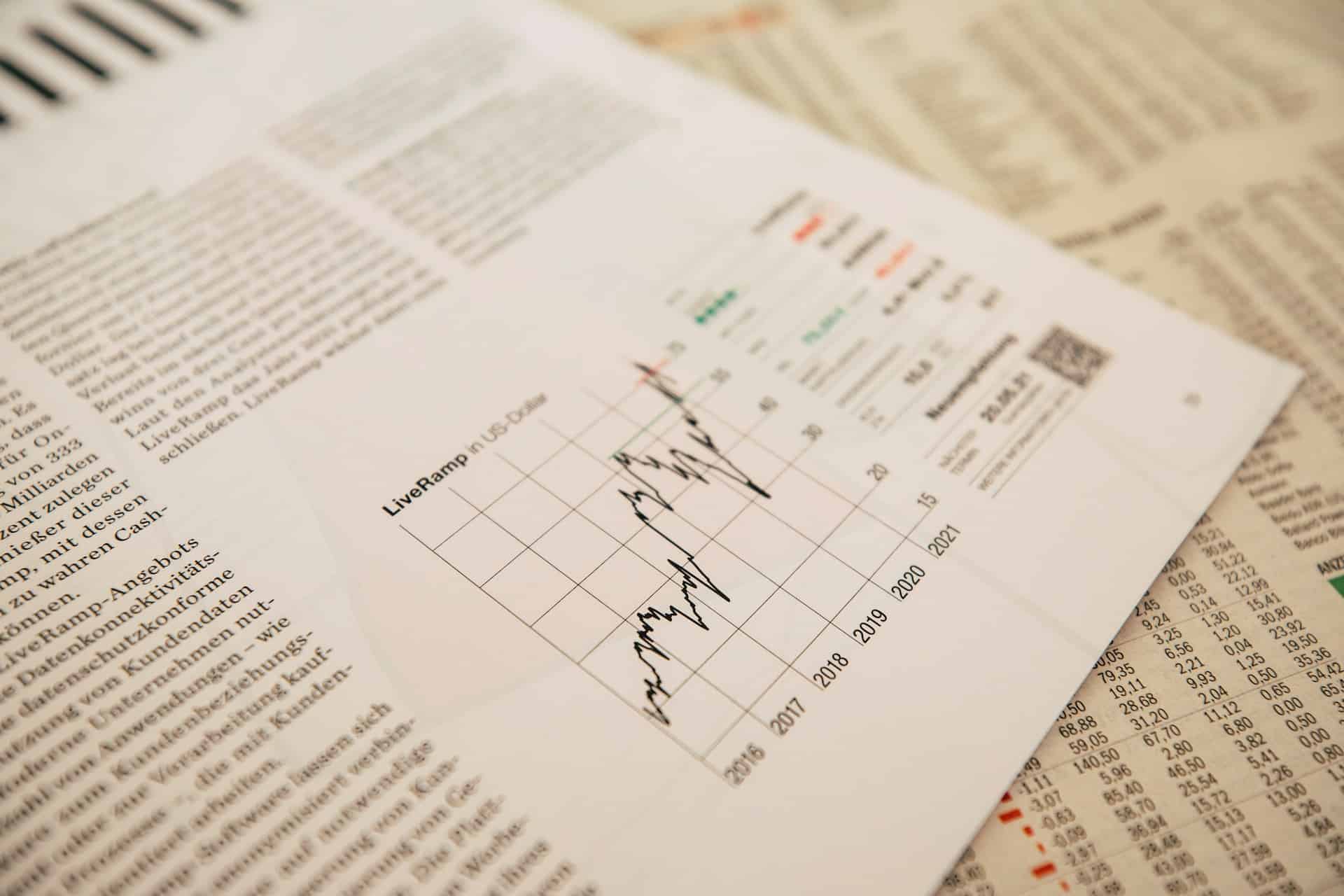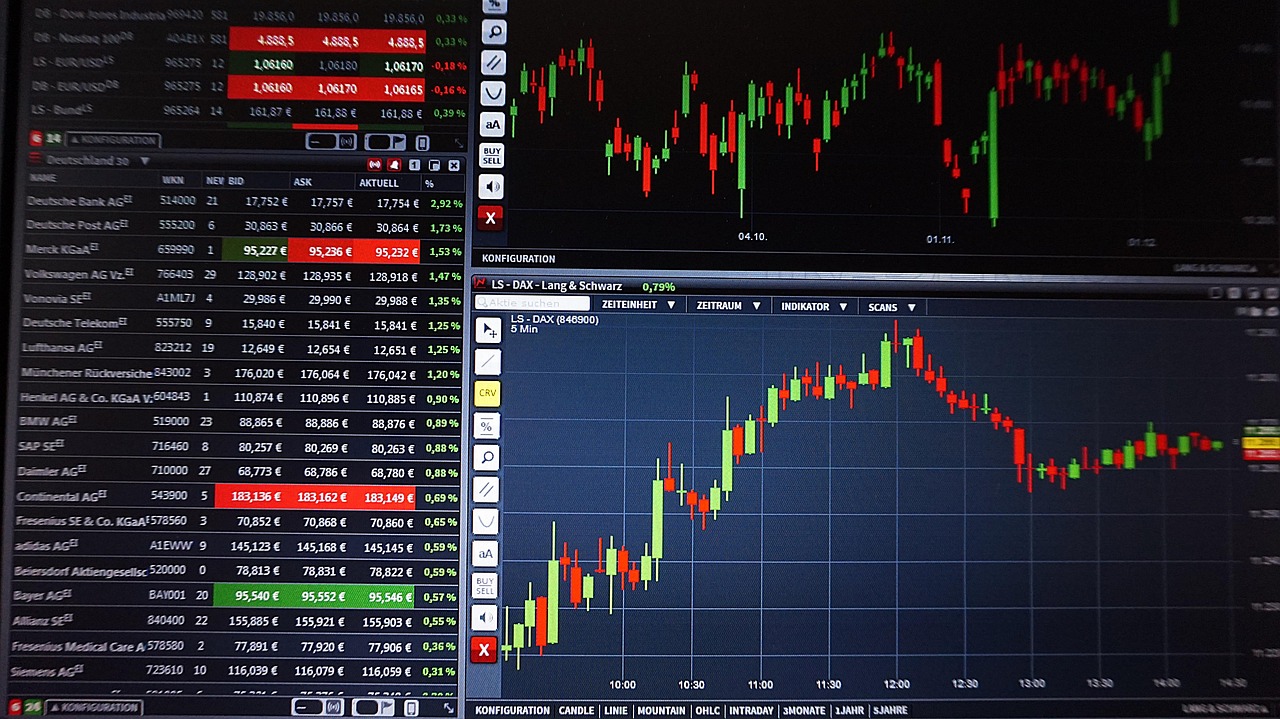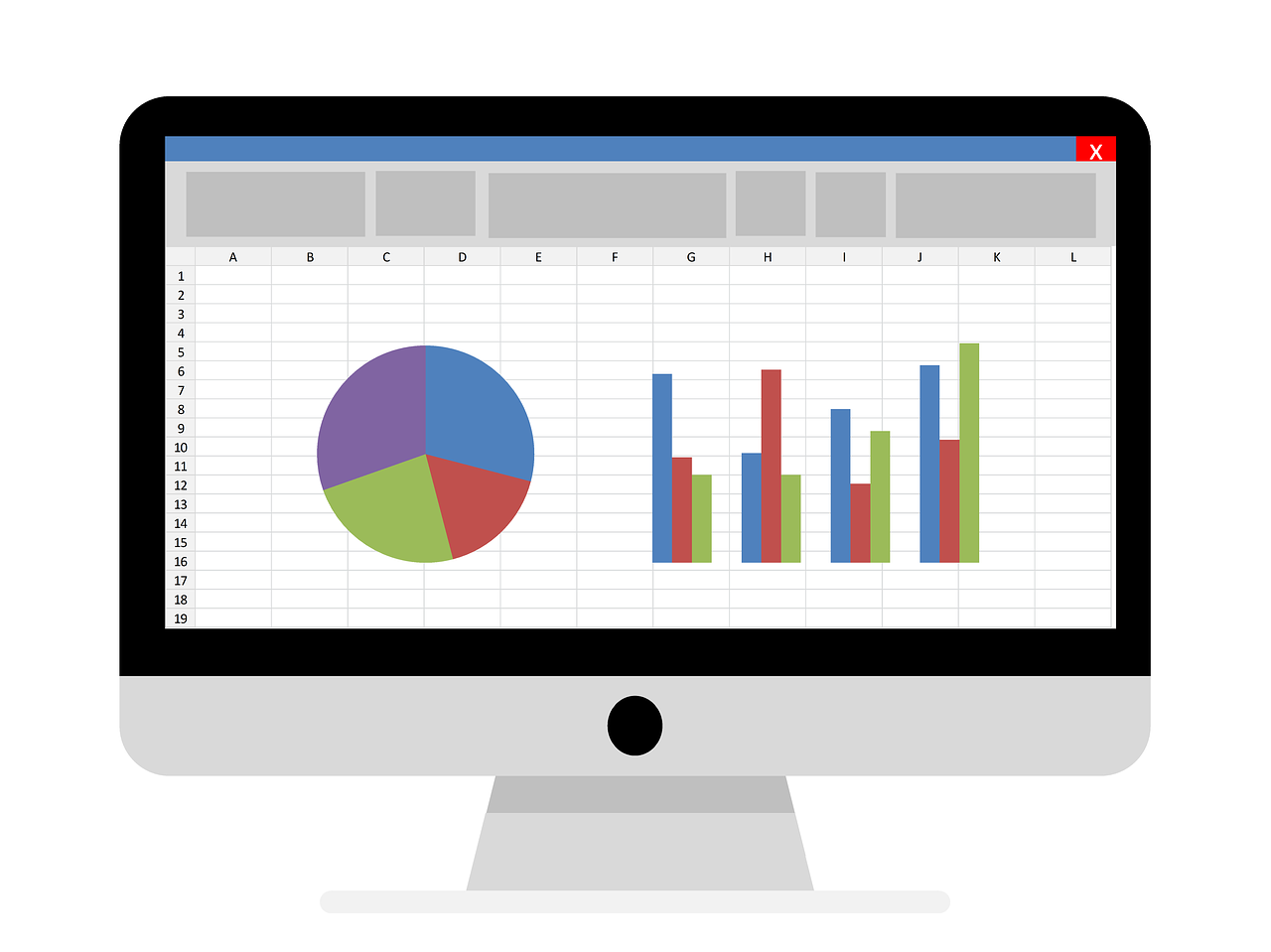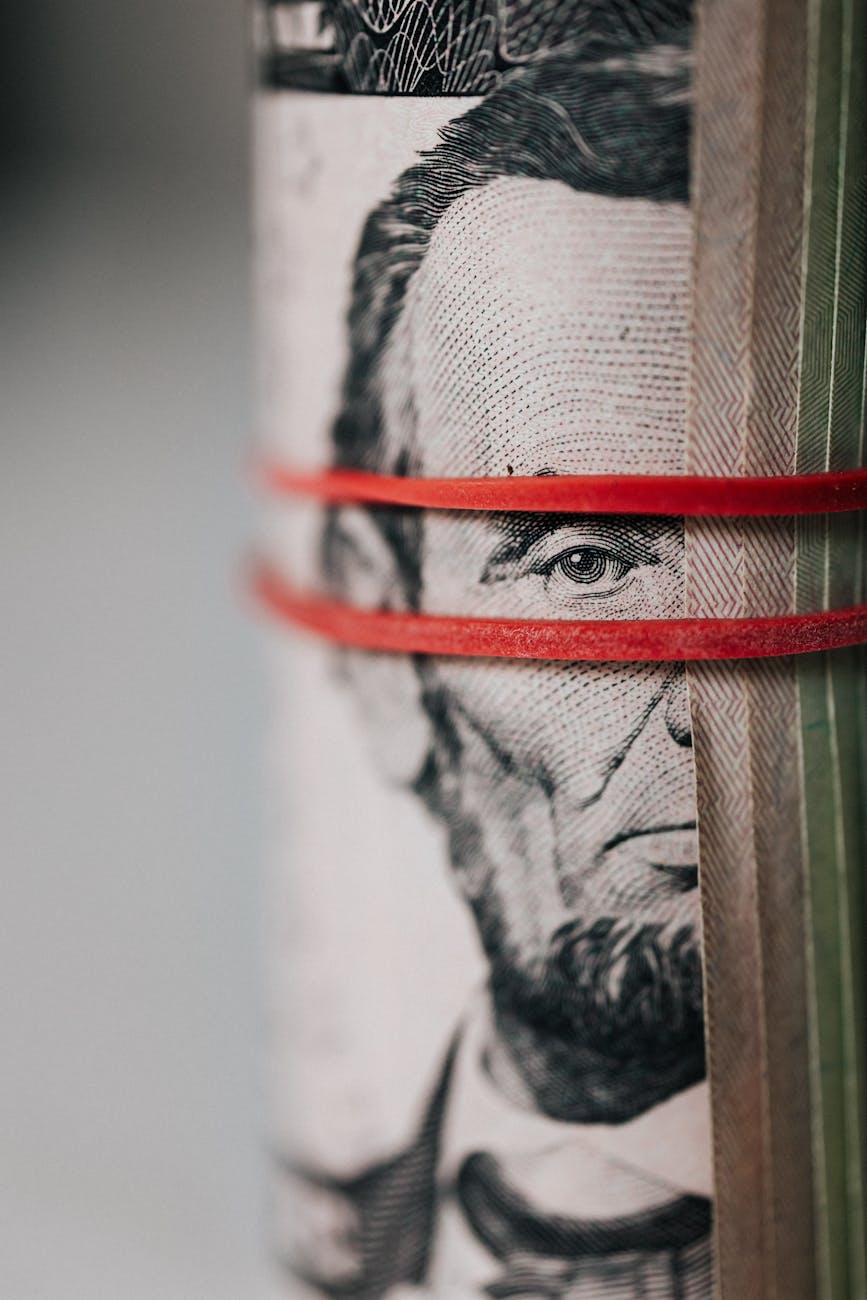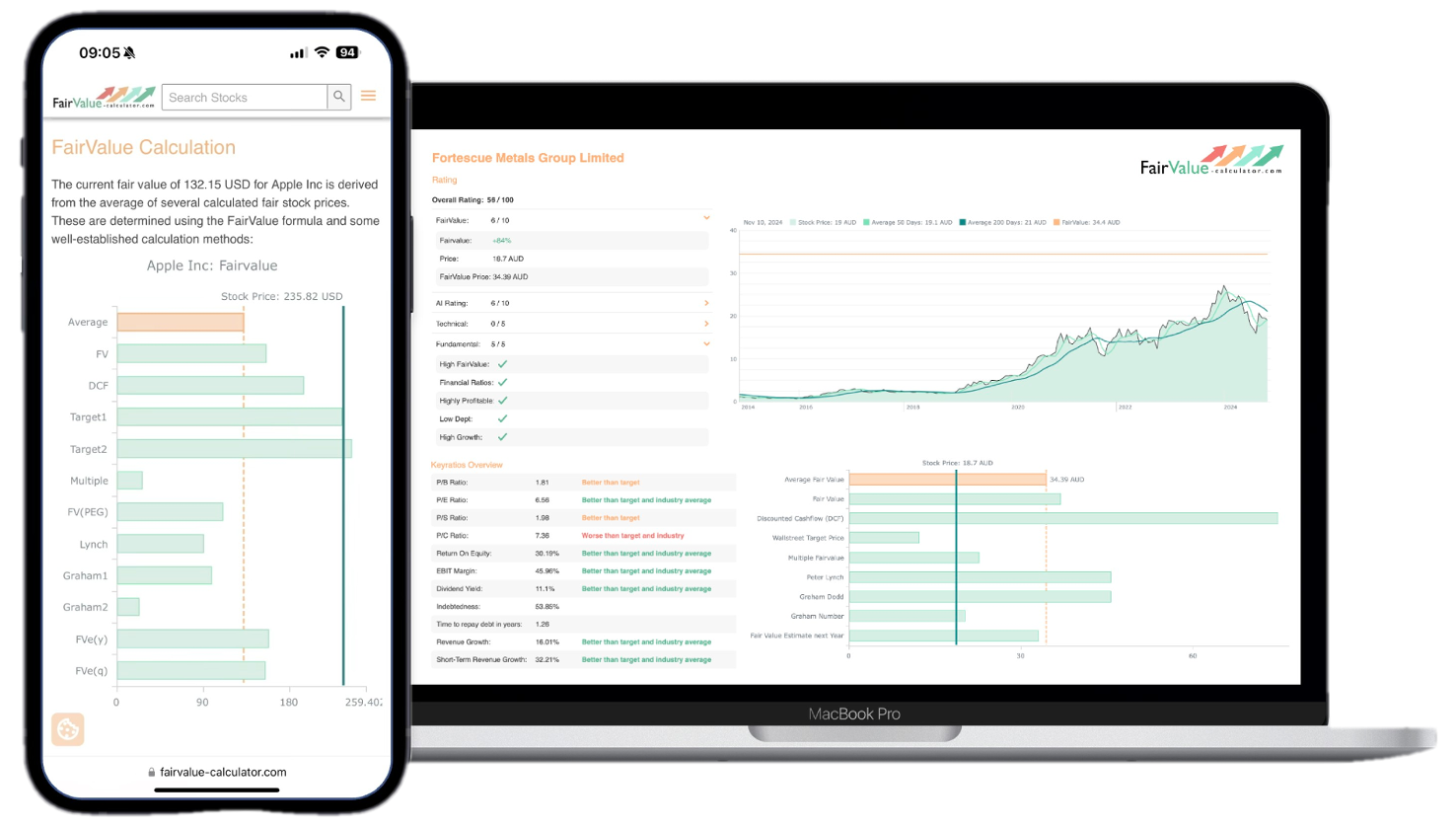A Guide to Estimating the True Value of a Stock
Warren Buffett, the legendary investor and CEO of Berkshire Hathaway, is renowned for his ability to identify undervalued stocks that have the potential for strong long-term growth. Central to Buffett’s investment approach is the concept of intrinsic value – the true underlying worth of a company based on fundamental analysis, as opposed to its current market price. Buffett seeks to invest in stocks trading below their intrinsic value, as this indicates the market has mispriced them and they have the potential to increase in value.
One of the tools Buffett uses to estimate intrinsic value is a discounted cash flow model, often referred to as Buffett’s intrinsic value calculator. This model forecasts future cash flows for a business and then discounts them back to the present to arrive at a valuation. The gap between this intrinsic value and the current stock price represents the potential upside if the market corrects the mispricing.
This article will provide an in-depth guide to how Buffett’s intrinsic value calculator works and how investors can use it to identify undervalued stocks.
Explore our most popular stock fair value calculators to find opportunities where the market price is lower than the true value.
- Peter Lynch Fair Value – Combines growth with valuation using the PEG ratio. A favorite among growth investors.
- Buffett Intrinsic Value Calculator – Based on Warren Buffett’s long-term DCF approach to determine business value.
- Buffett Fair Value Model – Simplified version of his logic with margin of safety baked in.
- Graham & Dodd Fair Value – Uses conservative earnings-based valuation from classic value investing theory.
- Intrinsic vs. Extrinsic Value – Learn the core difference between what a company’s really worth and what others pay.
- Intrinsic Value Calculator – A general tool to estimate the true value of a stock, based on earnings potential.
- Fama-French Model – For advanced users: Quantifies expected return using size, value and market risk.
- Discount Rate Calculator – Helps estimate the proper rate to use in any DCF-based valuation model.
How the Intrinsic Value Calculator Works
Buffett’s intrinsic value calculator uses a discounted cash flow model based on the following key inputs:
- Future cash flow forecasts – Projections of net cash from operations expected to be generated over several years, based on factors like revenue growth, margins, capex needs, etc. This requires a deep financial analysis of the business.
- Terminal value – An estimate of the value of all cash flows expected beyond the explicit forecast period. Often calculated using a perpetual growth model.
- Discount rate – The investor’s required annual rate of return, which accounts for the time value of money and investment risk. Buffett typically uses the long-term Treasury bond yield plus a 3-4% risk premium.
The projected future cash flows are discounted back to the present using the discount rate to calculate a net present value (NPV). The terminal value is also discounted back. The NPV plus the discounted terminal value gives the intrinsic value.
💡 Discover Powerful Investing Tools
Stop guessing – start investing with confidence. Our Fair Value Stock Calculators help you uncover hidden value in stocks using time-tested methods like Discounted Cash Flow (DCF), Benjamin Graham’s valuation principles, Peter Lynch’s PEG ratio, and our own AI-powered Super Fair Value formula. Designed for clarity, speed, and precision, these tools turn complex valuation models into simple, actionable insights – even for beginners.
Learn More About the Tools →The intrinsic value per share is calculated by dividing this total intrinsic value by the number of shares outstanding. This represents the estimated fair value of the stock. Comparing it to the actual market price allows for calculating the potential upside or downside.
Forecasting Future Cash Flows
The cornerstone of the intrinsic value calculator is having accurate projections of future cash flows. Buffett emphasizes that these projections must reflect realistic, conservative assumptions about the company’s earnings power over time.
Key principles Buffett follows include:
- Focus on free cash flow – Cash from operations minus capital expenditures. This represents the cash available for distribution to shareholders. Revenue or net income alone can be misleading.
- Normalize earnings – Adjust for any unusual one-time items to estimate sustainable earning power. Ignore speculative growth assumptions.
- Account for industry/macro factors – Consider the competitive landscape, regulations, technological disruption, economic conditions, etc. that could impact future cash flows.
- Conservative projections – Avoid overly optimistic assumptions. Use conservative revenue growth rates and margins.
- Long-term historical trends – Past cash flow performance over decades provides a reasonable starting point for projections.
- Management competence – Assess the ability of management to effectively allocate capital and drive profitable growth. This impacts projections.
By diligently studying the business, competitors, and management, Buffett can make reasonable 10+ year cash flow projections. He emphasizes taking the time necessary to truly understand the economics of the business.
Estimating Terminal Value
The terminal value accounts for all cash flows expected beyond the explicit forecast period, often a decade or more. It typically represents a significant share of the total intrinsic value.
Buffett usually applies a perpetual growth model to calculate terminal value:
Terminal Value = Final Year Cash Flow x (1 + Long-term Growth Rate) / (Discount Rate – Long-term Growth Rate)
The long-term growth rate is conservatively estimated based on GDP growth and inflation expectations. Buffett is wary of using growth rates much over 2-3%, as high growth over decades is extremely rare.
The discount rate minus the growth rate represents the capitalization rate applied to the final year cash flow. This capitalization rate typically ranges from 8-12% based on current interest rates and typical market returns.
Choosing the Appropriate Discount Rate
Choosing the discount rate, or required return, meaningfully impacts the intrinsic value. Buffett seeks a rate that compensates for the riskiness of the cash flows.
His preferred approach is:
Discount Rate = Risk-Free Rate + Equity Risk Premium
The risk-free rate is the long-term Treasury bond yield, reflecting the time value of money.
The equity risk premium compensates for investment risk. Added to the Treasury yield, it gives the total expected return. Buffett adds a 3-4% equity premium, representing the long-term equity market risk premium.
So if the 10-year Treasury yield was 5%, Buffett might use an 8% discount rate. This assumes a 3% premium over the risk-free rate is adequate compensation for the risk of the stock.
For exceptionally safe and stable companies like Coca-Cola, he might use a lower premium, like 2%. This results in a slightly lower discount rate due to the safety of the cash flows.
Calculating Margin of Safety
After estimating the intrinsic value, Buffett calculates his all-important margin of safety. This is the difference between the intrinsic value and the current market price.
The wider the margin of safety, the larger the discount to intrinsic value. Buffett wants at least a 30% discount before investing but prefers 50% or higher.
For example, if a stock has an estimated intrinsic value of $100 per share, and the current market price is $80, it has a 20% margin of safety. The market price would have to rise by 25% to reach fair value.
The margin of safety provides wiggle room in case the intrinsic value estimate turns out too high. The larger the margin, the more undervaluation protects against permanent capital loss.
Applying the Intrinsic Value Calculator
While simple in concept, properly applying Buffett’s intrinsic value calculator in practice requires rigor, discipline, and patience.
Here is an overview of the key steps involved:
- Business analysis – Thoroughly research the economics, competitive advantages, risks, and management quality of the business.
- Cash flow projections – Project future cash flows for at least 10 years based on conservative, justifiable assumptions. Consider margins, capex, and working capital.
- Terminal value estimate – Use a perpetual growth model with a conservative growth rate.
- Discount rate estimation – Select a suitable discount rate based on a risk-free rate plus an appropriate equity risk premium.
- Discount DCF and terminal value – Discount projected cash flows and terminal value back to the present to determine NPV.
- Calculate intrinsic value per share – Divide NPV by current shares outstanding. Compare to market price.
- Determine margin of safety – Calculate the discount of market price to estimated intrinsic value. Aim for at least a 30% margin.
- Sensitivity analysis – Test using different assumptions to understand the impact on valuation range. Focus on key value drivers.
Successful application requires avoiding optimism bias and using conservative figures one is highly confident can be achieved. It takes patience and discipline to only invest at attractive margins of safety. But this is the key to deploying Buffett’s prudent value investing strategy.
Case Study: Coca-Cola Valuation
To demonstrate Buffett’s intrinsic value calculator, let’s walk through an example valuation for Coca-Cola (KO). Buffett has called Coke one of his best investments of all time.
We will calculate Coke’s intrinsic value and expected return based on conservative assumptions:
Cash Flow Projections
- Next 5 years: 5% revenue growth, 7% EBIT margin, 3% capex/revenue
- Years 6-10: 4% revenue growth, 7% EBIT margin, 3% capex/revenue
- Terminal growth rate: 3%
Discount Rate
- 10-year Treasury yield: 3%
- Equity risk premium: 2% (conservative – stable business)
- Discount rate: 3% + 2% = 5%
Based on these assumptions, the discounted cash flow valuation is $64 billion. Including the $260 billion terminal value, the total intrinsic value is $324 billion.
With 1.8 billion shares outstanding, this gives an intrinsic value per share of $180.
At the current share price of $150, Coke has a 17% margin of safety and a potential 20% upside to reach estimated intrinsic value.
This conservative intrinsic value calculation confirms Coke is reasonably undervalued currently. The 17% margin of safety helps compensate for any errors in the growth assumptions.
An investor requiring at least a 30% margin of safety may wait for a lower entry point. But at current valuations, Coke appears a solid Buffett-style value investment.
Key Takeaways
- Buffett uses a discounted cash flow model to estimate intrinsic value and identify undervalued stocks.
- The model discounts projections of future free cash flows and a conservative terminal value.
- A discount rate based on the Treasury yield plus an equity risk premium is applied.
- At least a 30% gap between intrinsic value and market price (margin of safety) is recommended before investing.
- Conservatively projecting future cash flows requires rigorous analysis of competitive position, economics, management, and industry trends.
- Patience is necessary to only invest when stocks trade well below intrinsic value. But this discipline is key to reducing risk.
Applying Buffett’s time-tested intrinsic value investing principles can help identify great companies trading at discounts to conservative intrinsic value estimates. For investors with a long-term horizon, combining business analysis with valuation work is a proven path to attractive risk-adjusted returns.
